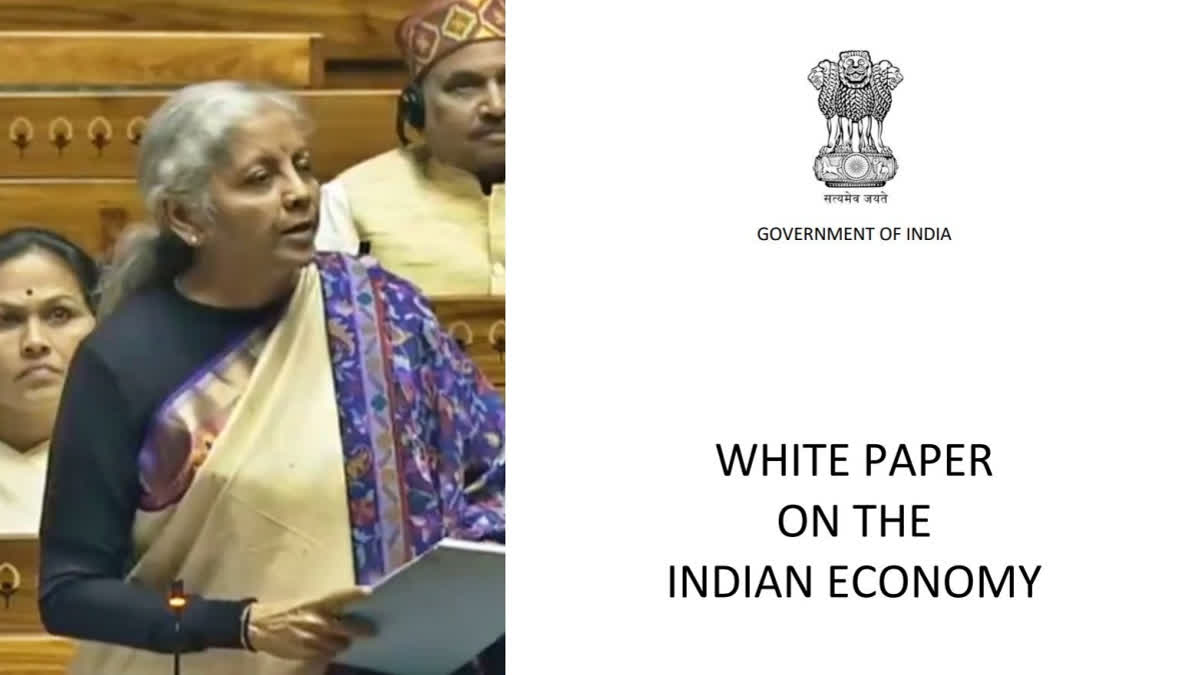New Delhi: Claiming that the BJP-led NDA government at the centre stabilized India’s economy and set it on a recovery and growth path, Union Finance Minister Nirmala Sitharaman on Thursday tabled a 'white paper' in the Parliament stating that the UPA Government inherited a 'healthy economy', ready for more reforms, but made it non-performing in its ten years from 2004-14.
“Now that we have stabilised the economy and set it on a recovery and growth path, it is necessary to place in the public domain the seemingly insurmountable challenges left behind as a legacy by the UPA Government. Every challenge of the pre-2014 era was overcome through our economic management and our governance. These have placed the country on a resolute path of sustained high growth. This has been possible through our right policies, true intentions, and appropriate decisions,” the 'white paper' tabled by Sitharaman in Lok Sabha stated.
It said that in 2004, when the UPA government began its term, the economy was growing at 8 per cent (with industry and services sector growth above 7 per cent each and a resuscitating agriculture sector growth above 9 per cent in FY04) amidst a benign world economic environment.
“Even as the country was standing at the cusp of emerging as a powerful economy, little was done by the UPA government to build upon the strong foundation laid by the previous NDA government,” read part one of the 'white paper' titled 'From a healthy economy in 2004 to a stagnant economy in 2014'.
It said that the UPA government, in its quest to maintain high economic growth by any means after the global financial crisis of 2008, "severely undermined" the macroeconomic foundations. “Under the UPA government, the economy had lost its way,” the paper said.
“One such foundation that was severely weakened by the UPA government was price stability. Inflation raged between 2009 and 2014 and the common man bore the brunt. Over the five-year period from FY10 to FY14, the average annual inflation rate was in double digits. Between FY04 and FY14, average annual inflation in the economy was 8.2 per cent,” the paper stated.
It further highlighted that the banking crisis was one of the most important and "infamous legacies" of the UPA government. Criticising the UPA government for 'mismanagement' of public finance, it said that the UPA Government's response to the 2008 Global Financial Crisis – a fiscal stimulus package to combat the spill-over effects - was "much worse than the problem it sought to address".
